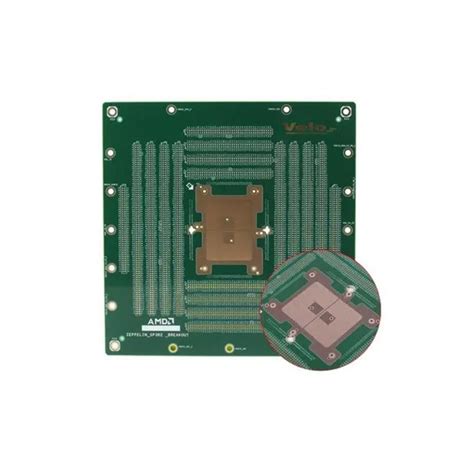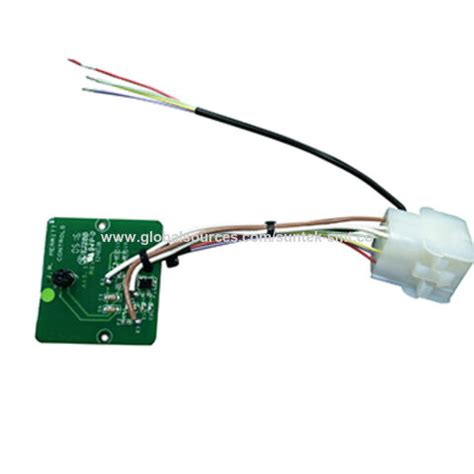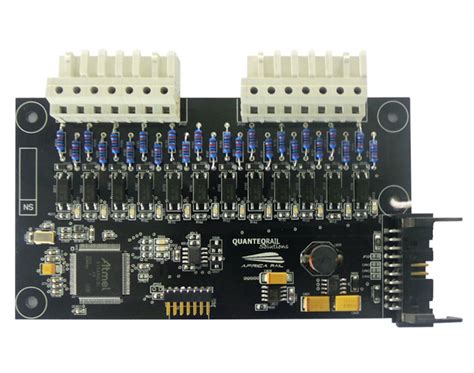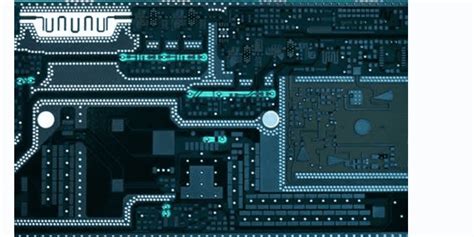ROHS Compliant PCB Assembly: Ensuring Sustainable Electronics Production

Key Takeaways
Adhering to ROHS compliance in PCB assembly is not just a regulatory obligation but a strategic commitment to environmentally responsible manufacturing By eliminating restricted substances like lead, mercury, and cadmium, PCBA processes align with global sustainability goals while mitigating risks of supply chain disruptions
Tip: Manufacturers should conduct regular audits of component suppliers to verify material declarations, as even trace amounts of restricted substances can compromise compliance.
Modern ROHS-compliant PCB assembly relies on advanced techniques such as lead-free soldering and halogen-free substrate materials These methods reduce toxic waste and enhance recyclability without sacrificing performance For instance, using tin-silver-copper alloys in place of traditional lead-based solder maintains electrical reliability in PCBA while meeting strict environmental criteria
Another critical aspect is harmonizing ROHS standards with international regulations like the EU’s Waste Electrical and Electronic Equipment (WEEE) directive This dual compliance ensures seamless market access and strengthens brand reputation as a leader in green electronics
Additionally, certifications like ROHS validate a manufacturer’s commitment to eco-innovation, which increasingly influences procurement decisions in industries ranging from automotive to medical devices By integrating compliance early in the design phase, engineers can optimize PCB assembly workflows for both efficiency and sustainability
Finally, the shift toward ROHS-compliant materials drives innovation in supply chains, encouraging partnerships with suppliers specializing in bio-based polymers and non-toxic adhesives This collaborative approach not only future-proofs production but also positions companies at the forefront of the circular economy movement

ROHS Compliance in PCB Manufacturing Essentials
Adhering to ROHS compliance in PCB assembly requires meticulous attention to material selection and production protocols At its core, the directive mandates the elimination of lead, cadmium, mercury, and other hazardous substances from PCBA processes, ensuring safer end products and reducing environmental contamination risks This requires manufacturers to audit supply chains rigorously, verifying that components like solder alloys, substrates, and coatings meet permissible thresholds for restricted chemicals
Modern PCB assembly workflows integrate advanced alternatives such as halogen-free laminates and lead-free solders, which maintain performance while aligning with sustainability goals For instance, replacing traditional tin-lead solder with tin-silver-copper alloys not only complies with ROHS but also enhances thermal reliability in high-stress applications To verify compliance, laboratories employ techniques like X-ray fluorescence (XRF) testing, which identifies restricted substances at trace levels without damaging components
Beyond material selection, ROHS compliance necessitates documentation transparency across the PCBA lifecycle Certificates of Conformity (CoCs) and Material Declarations (MDs) serve as critical proof for auditors and global regulators, particularly when exporting to markets like the EU or North America Manufacturers implementing closed-loop quality systems can track material batches in real time, minimizing non-conformance risks during high-volume production
While transitioning to ROHS-aligned PCB assembly may initially increase costs due to specialized materials and testing, it strengthens market competitiveness by meeting eco-conscious consumer demands and avoiding non-compliance penalties Furthermore, it fosters innovation in green manufacturing technologies, positioning companies as leaders in sustainable electronics
Eliminating Hazardous Materials in Electronics Assembly
Modern PCB assembly processes face increasing pressure to phase out substances that threaten environmental and human health The Restriction of Hazardous Substances (RoHS) directive mandates the elimination of lead, mercury, cadmium, and other toxic materials from PCBA workflows, reshaping how manufacturers approach material selection and process design By replacing traditional solder alloys containing lead with tin-silver-copper alternatives, PCB assembly providers reduce landfill contamination risks while maintaining electrical conductivity and thermal reliability
The shift to RoHS-compliant PCBA requires meticulous supply chain management Component suppliers must verify that parts like connectors, resistors, and integrated circuits contain no restricted substances above 01% thresholds Advanced X-ray fluorescence (XRF) analyzers now enable real-time material screening during incoming inspections, ensuring compliance before components enter production lines This proactive approach prevents costly rework and aligns with global regulations from the EU to Asia-Pacific markets
Manufacturers also address hidden hazards in auxiliary materials Flux formulations, once laden with volatile organic compounds (VOCs), now utilize water-based chemistries that minimize airborne pollutants during soldering Similarly, halogen-free laminates in circuit boards eliminate brominated flame retardants – substances linked to toxic byproducts when incinerated These innovations demonstrate how PCB assembly evolves beyond mere regulatory compliance to embrace circular economy principles, where end-of-life boards can be safely recycled or repurposed
Transitioning to cleaner PCBA processes does present technical challenges Lead-free solders require higher melting points, demanding precise temperature control to prevent board warping or component damage Process engineers counter this through adaptive reflow oven profiles and enhanced thermal management in board design Such refinements prove that environmental responsibility in electronics manufacturing coexists with – and often drives – technological advancement
By systematically removing hazardous substances, the industry establishes a foundation for scalable sustainable practices This paradigm shift not only meets current RoHS requirements but also prepares PCB assembly ecosystems for emerging regulations targeting perfluorinated compounds and plasticizers The result is a cleaner production chain that satisfies both ecological priorities and the performance demands of 5G, IoT, and automotive electronics applications

Sustainable PCB Assembly Techniques Explained
Modern PCB assembly processes prioritize sustainability by integrating eco-conscious methodologies that align with global environmental standards At the core of ROHS-compliant PCBA lies the elimination of lead-based solders, which are replaced by tin-silver-copper alloys that reduce toxicity without compromising electrical performance Advanced manufacturers now employ closed-loop reflow systems to minimize volatile organic compound (VOC) emissions during soldering, ensuring cleaner production cycles
Another critical technique involves optimizing material usage through laser-direct imaging (LDI), which enhances precision in circuit patterning while reducing chemical waste from traditional photolithography For substrate selection, halogen-free laminates have become a staple in sustainable PCB assembly, offering flame-retardant properties without relying on brominated additives These materials not only meet ROHS directives but also improve end-of-life recyclability
Energy efficiency plays a pivotal role, with factories adopting renewable energy-powered pick-and-place machines and implementing modular designs to streamline PCBA workflows Techniques like 3D solder paste inspection (SPI) further reduce defects, minimizing material waste from rework Additionally, water-soluble fluxes are replacing solvent-based variants, cutting hazardous waste generation by up to 40% in cleaning stages
To maintain alignment with broader sustainability goals, manufacturers are adopting lifecycle assessment (LCA) tools to quantify the environmental impact of each PCB assembly stage This data-driven approach ensures continuous improvement in resource efficiency while adhering to international certifications like ISO 14001 By merging these innovations, the electronics industry is advancing toward a circular economy model—where ROHS-compliant PCBA isn’t just a regulatory checkbox but a cornerstone of responsible manufacturing
Global Standards for Eco-Friendly Circuit Production
The evolution of PCB assembly processes has been profoundly shaped by global environmental regulations, with RoHS compliance emerging as a cornerstone for sustainable electronics manufacturing International standards now mandate the elimination of hazardous substances like lead, mercury, and cadmium from PCBA workflows, driving manufacturers to adopt cleaner materials and processes The European Union’s RoHS Directive, China’s Administrative Measure on Pollution Control, and the U.S EPA’s Electronics Stewardship Program collectively form a regulatory framework that prioritizes eco-friendly circuit production
| Region | Key Regulation | Restricted Substances | Compliance Deadline |
|---|---|---|---|
| EU | RoHS 3 (Directive 2015/863 | 10 substances, including phthalates | July 22, 2019 |
| USA | EPA Title 40 CFR Part 745 | Lead, mercury, PCBs | Ongoing enforcement |
| China | SJ/T 11363-2006 | 6 hazardous materials | Effective since 2006 |
| Japan | JIS C 0950 (J-MOSS) | 7 heavy metals | 2006 (revised 2018) |
These standards require PCB assembly providers to implement rigorous material testing protocols and supply chain audits For instance, halogen-free laminates and lead-free solders have become industry norms in PCBA workflows, reducing environmental toxicity without compromising electrical performance The International Electrotechnical Commission (IEC) further supplements regional laws with technical guidelines, such as IEC 62474 for material declaration, ensuring harmonization across borders
Manufacturers navigating this complex landscape often leverage third-party certifications like IPC-1401 for sustainable electronics to demonstrate compliance However, challenges persist in balancing cost-effectiveness with regulatory adherence, particularly for smaller PCBA suppliers Innovations in recyclable substrate materials and closed-loop manufacturing systems are increasingly critical to meeting both ecological and economic objectives By aligning with global standards, the electronics industry not only mitigates legal risks but also gains access to green technology markets valued at over $13 trillion annually
ROHS Certification Benefits for Electronics Manufacturers
Adopting ROHS certification provides electronics manufacturers with strategic advantages in both regulatory compliance and market positioning By integrating ROHS-compliant PCB assembly processes, companies align with global environmental regulations that restrict hazardous substances like lead, mercury, and cadmium This compliance not only mitigates legal risks but also enhances brand reputation as consumers increasingly prioritize eco-conscious products
For manufacturers specializing in PCBA (printed circuit board assembly), certification streamlines access to key markets, including the European Union and North America, where ROHS standards are mandatory By eliminating restricted materials from PCB assembly workflows, businesses reduce disposal costs and avoid penalties associated with non-compliant components Furthermore, certified facilities often experience improved supply chain reliability, as component suppliers prioritize partnerships with ROHS-aligned manufacturers
The operational benefits extend beyond compliance ROHS-certified PCB assembly fosters innovation in material selection, driving the adoption of alternative substrates and lead-free soldering techniques These adaptations not only meet sustainability goals but also enhance product durability, as modern ROHS-compliant materials often outperform traditional counterparts in thermal stability and conductivity
Manufacturers also gain a competitive edge through green marketing opportunities Highlighting ROHS certification in product documentation allows brands to differentiate themselves in crowded markets, particularly when bidding for contracts with environmentally regulated industries like automotive or medical devices Additionally, certification simplifies compliance with complementary standards such as WEEE (Waste Electrical and Electronic Equipment), creating a holistic approach to sustainable electronics production
By investing in ROHS-compliant PCBA processes, manufacturers future-proof their operations against tightening global regulations while positioning themselves as leaders in the transition toward circular economy models This dual focus on compliance and innovation ensures long-term viability in an industry where environmental accountability is no longer optional

Balancing Quality and Sustainability in PCB Design
Achieving equilibrium between technical excellence and environmental responsibility in PCB assembly requires a paradigm shift in design methodologies Modern engineers must reconcile the demand for high-performance circuitry with the imperative to eliminate restricted substances like lead, mercury, and cadmium under ROHS directives This duality begins at the schematic stage, where material selection directly impacts both PCBA reliability and ecological footprint
Advanced simulation tools now enable designers to model how alternative substrate materials—such as halogen-free laminates or biodegradable solder masks—affect thermal dissipation and signal integrity For instance, replacing traditional FR-4 boards with glass-reinforced epoxy composites reduces brominated flame retardants without compromising dielectric strength However, these substitutions necessitate rigorous prototyping cycles to validate performance under stress conditions, ensuring PCB assembly outcomes meet MIL-STD-883 standards for military-grade applications
Three strategic approaches are reshaping sustainable design practices:
1 Design for Disassembly (DfD) principles that simplify component recovery during end-of-life recycling
2 Energy-optimized layouts minimizing power loss through shortened trace geometries
3 Integration of IoT-enabled sensors for real-time monitoring of solder joint integrity
A 2023 IPC study revealed that 68% of electronics manufacturers now employ simulation-driven PCBA workflows to preemptively address thermal management challenges posed by lead-free solders This proactive methodology reduces post-production rework by 22%, directly lowering resource waste
Critically, sustainability enhancements must not undermine functional robustness Cross-functional teams are adopting failure mode analytics to identify how material substitutions influence electromagnetic compatibility (EMC) and vibration resistance For automotive PCB assembly projects, this has led to hybrid designs combining recycled copper alloys with nano-coated surface finishes to withstand extreme temperatures while maintaining conductivity
The economic argument further strengthens this balance While sustainable PCB assembly processes initially incur 8-12% higher material costs, they reduce long-term liabilities related to regulatory non-compliance and brand reputation risks As global markets increasingly mandate circular economy practices, manufacturers prioritizing this equilibrium gain competitive advantage in sectors ranging from medical devices to renewable energy systems

Innovative Materials for Green Electronics Manufacturing
The shift toward ROHS-compliant PCB assembly has accelerated the adoption of innovative materials that reduce environmental impact without compromising functionality Modern PCBA processes now integrate advanced substrates like halogen-free laminates and lead-free solder alloys, which meet stringent global regulations while maintaining electrical performance For instance, high-performance polymers such as polyimide blends offer superior thermal stability, replacing traditional brominated flame retardants linked to ecological concerns
Another critical innovation lies in recyclable metal finishes Silver immersion and organic solderability preservatives (OSPs) are gaining traction as alternatives to tin-lead coatings, ensuring PCB assembly workflows align with circular economy principles These materials not only eliminate hazardous substances but also enhance corrosion resistance, extending product lifespans in demanding applications like automotive electronics
Beyond traditional materials, researchers are exploring bio-based resins derived from plant starches and lignin These biodegradable substrates decompose naturally, addressing e-waste challenges posed by conventional fiberglass-reinforced boards When paired with ROHS-certified PCBA techniques like laser direct structuring (LDS), they enable precise, waste-minimized manufacturing—a key advantage for industries prioritizing carbon neutrality
The integration of nanocomposite dielectrics further illustrates this evolution Materials infused with graphene or ceramic nanoparticles improve signal integrity in high-frequency circuits, reducing energy loss and enabling compact, eco-efficient designs Such advancements underscore how sustainable PCB assembly no longer requires trade-offs between performance and environmental responsibility
To validate compliance, manufacturers employ advanced testing protocols like X-ray fluorescence (XRF) spectroscopy, ensuring all PCBA outputs meet the strict thresholds for lead, mercury, and other restricted substances This rigorous material vetting process, combined with ongoing R&D investments, positions green electronics as both a regulatory necessity and a competitive differentiator in global markets

Impact of ROHS Regulations on Global Supply Chains
The implementation of ROHS compliance has fundamentally reshaped electronics manufacturing networks, creating both challenges and opportunities for PCB assembly providers and downstream partners By restricting hazardous substances like lead, mercury, and cadmium, the regulations have compelled supply chain realignments across continents, with manufacturers overhauling material sourcing, component validation, and production workflows PCBA suppliers now prioritize partnerships with raw material vendors offering certified ROHS-compliant substrates, solders, and coatings, ensuring seamless integration into global markets that enforce stringent environmental standards
This regulatory shift has introduced cost-driven innovations, as companies balance compliance expenses with competitive pricing For instance, Asian PCB assembly hubs—responsible for over 60% of global electronics production—have invested in advanced purification systems to eliminate restricted substances from manufacturing byproducts Meanwhile, European and North American firms leverage ROHS adherence as a differentiation strategy, aligning with regional sustainability mandates and consumer preferences Cross-border logistics now require meticulous documentation, with batch-level material disclosures becoming a non-negotiable aspect of international PCBA shipments
However, the transition has not been frictionless Smaller-scale PCB assembly operators face heightened operational complexity, particularly in verifying the compliance of legacy components or managing mixed-material inventories Industry analyses reveal a 12–18% increase in compliance auditing costs since 2020, though these are offset by reduced environmental penalties and access to premium eco-conscious markets Forward-looking suppliers are adopting blockchain-enabled traceability systems, enabling real-time verification of ROHS-compliant materials across multi-tiered supply chains
As regulations evolve, the interplay between ROHS compliance and circular economy principles grows more pronounced Leading PCBA manufacturers now integrate recyclable substrates and modular designs, reducing dependence on restricted substances while future-proofing production lines against upcoming regulatory expansions This alignment not only mitigates compliance risks but also strengthens supply chain resilience, positioning proactive firms as preferred partners in the $650 billion sustainable electronics sector
Conclusion
As the electronics industry continues to evolve, ROHS-compliant PCB assembly has emerged as a cornerstone for aligning technological advancement with environmental stewardship By rigorously eliminating hazardous substances like lead, mercury, and cadmium, manufacturers not only adhere to stringent global standards but also contribute to a cleaner, safer ecosystem The shift toward sustainable PCBA processes underscores a commitment to circular economy principles, where waste reduction and material recyclability become integral to production workflows
Adopting ROHS-compliant practices in PCB assembly ensures that products meet regulatory demands across international markets, minimizing legal risks while enhancing brand reputation For electronics manufacturers, this compliance translates into long-term cost savings through reduced liability and improved supply chain resilience Moreover, innovations in green materials—such as halogen-free substrates and biodegradable solders—demonstrate how PCBA can maintain high-performance benchmarks without compromising ecological integrity
The broader implications of ROHS regulations extend beyond manufacturing floors By standardizing eco-friendly production methodologies, these directives drive collaboration among suppliers, designers, and recyclers, fostering a unified approach to sustainability As consumer demand for ethical electronics grows, companies prioritizing ROHS-compliant PCB assembly will not only lead in regulatory adherence but also capture competitive advantages in an increasingly eco-conscious marketplace The future of electronics hinges on balancing technical excellence with planetary responsibility—a vision achievable through continuous innovation in sustainable PCBA practices
Frequently Asked Questions
What defines a ROHS-compliant PCB assembly process?
A ROHS-compliant PCB assembly (Restriction of Hazardous Substances) eliminates six hazardous materials—lead, mercury, cadmium, and others—from the PCBA workflow This ensures the final product meets global environmental regulations while maintaining functional reliability
How does ROHS compliance affect material selection in PCBA?
Manufacturers must source alternatives to restricted substances, such as lead-free solder alloys and halogen-free laminates These substitutions require precise adjustments in PCB assembly processes to avoid compromising thermal stability or electrical performance
Are ROHS-certified PCBs less durable than traditional ones?
When designed and tested properly, ROHS-compliant PCB assemblies match or exceed conventional boards in durability Advanced testing protocols, including thermal cycling and accelerated aging, validate their performance under real-world conditions
What industries prioritize ROHS-compliant electronics?
Sectors like medical devices, automotive, and consumer electronics mandate ROHS adherence due to stringent safety standards and international export requirements Compliance also enhances brand reputation in eco-conscious markets
How can manufacturers verify ROHS compliance in PCBA?
Third-party laboratories conduct X-ray fluorescence (XRF) testing to detect restricted substances Suppliers should provide Material Declarations (MDs) and Certificates of Compliance (CoCs) for audit trails
Does transitioning to ROHS-compliant PCB assembly increase costs?
Initial investments in material upgrades and process recalibration may raise costs, but long-term benefits like reduced environmental liability and access to regulated markets offset these expenses
Explore Custom ROHS-Compliant Solutions
For tailored PCB assembly services that align with global sustainability standards, please click here to consult our technical team







